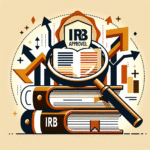Behind the Mood Swings: Identifying Early Signs of Bipolar Disorder in Youth – An Essential Guide
Introduction
Navigating the tumultuous waters of adolescence is a challenge for any young person, but when mood swings escalate from typical teenage behavior to severe emotional fluctuations, it may be time to dive deeper into the potential underlying issues. Behind the Mood Swings: Identifying Early Signs of Bipolar Disorder in Youth is a crucial topic that calls for urgent attention. As mental health awareness proliferates, recognizing the early signs of bipolar disorder can prove transformative not only for the youth experiencing these symptoms but also for families, educators, and healthcare providers.
Bipolar disorder, previously known as manic depression, often manifests in youth as dramatic mood swings ranging from euphoric highs to crushing lows. The impact can reverberate through every aspect of a young person’s life, affecting relationships, academics, and overall well-being. Thus, understanding the early signs is essential for timely intervention and support.
In this article, we will delve into identifying early signs of bipolar disorder in youth, backed by case studies, expert insights, and actionable strategies for families and educators alike.
Understanding Bipolar Disorder
What is Bipolar Disorder?
Bipolar disorder is a mental health condition characterized by extreme mood changes—from energetic highs (mania or hypomania) to debilitating lows (depression). These mood swings are more severe than the regular ups and downs everyone experiences. In young people, early diagnosis can be particularly challenging, as symptoms may overlap with typical adolescent behavior or other mental health issues.
Types of Bipolar Disorder
Bipolar I Disorder: Characterized by manic episodes that last at least seven days or by manic symptoms that are severe enough to require immediate hospital care. Depressive episodes typically occur as well, lasting at least two weeks.
Bipolar II Disorder: Defined by a pattern of depressive episodes and hypomanic episodes—less severe than full-blown mania—without the full-blown manic episodes characteristic of Bipolar I.
Cyclothymic Disorder (Cyclothymia): Involves periods of hypomanic symptoms and periods of depressive symptoms lasting for at least two years (one year in children and adolescents).
- Other Specified and Unspecified Bipolar and Related Disorders: Defined by bipolar spectrum symptoms that do not match the three categories listed above.
Recognizing the early signs of bipolar disorder in youth is essential for ensuring appropriate treatment and support.
Recognizing Early Signs of Bipolar Disorder in Youth
Identifying early warning signs can be challenging. However, several key indicators can help parents, guardians, and educators spot possible symptoms.
1. Extreme Mood Changes
One of the most distinct early signs is marked mood changes. A youth may exhibit:
- High Energy: Engaging in multiple activities at once, feeling invincible.
- Irritability: Becoming easily agitated or frustrated.
- Sudden Sadness: Experiencing prolonged periods of sadness or withdrawal.
Case Study: Jenna, 15 years old
Jenna was known for her cheerful disposition, but over six months, her behavior shifted dramatically. She oscillated between frictional energy levels during school (rambling, racing thoughts) and deep despair, often isolating herself for days. Recognizing these drastic fluctuations led her parents to seek professional help, resulting in a diagnosis of Bipolar II disorder.
2. Changes in Sleep Patterns
Sleep disruptions can signal mood disorders. Symptoms include:
- Insomnia: Difficulty sleeping during manic periods.
- Hypersomnia: Too much sleep during depressive episodes.
A noticeable shift in sleep habits within youth should prompt further evaluation.
3. Impulsivity and Risk-Taking Behavior
During manic phases, young people often engage in impulsive or risky behaviors. This might include:
- Excessive spending.
- Dangerous driving.
- Substance abuse.
Case Study: Mark, 18 years old
Mark, typically a responsible student, began skipping classes and making impulsive financial decisions like gambling. His family attributed these actions to teenage rebellion until they observed a drastic increase in energy levels followed by excessive fatigue. Following an assessment, Mark was diagnosed with Bipolar I disorder.
4. Difficulty in Concentration
The erratic energy shifts can impair focus and productivity. Youth may exhibit:
- Inattention: Struggling to keep up in school or at work.
- Memory Problems: Difficulty remembering recent events or learning new information.
It’s crucial to differentiate between typical teenage distraction and symptoms of bipolar disorder.
The Role of Family and Community
Recognizing early signs of bipolar disorder is often a collaborative effort among families, schools, and mental health professionals. Creating a support network can significantly improve outcomes for affected youth.
1. Open Communication
Encouraging dialogue about mental health at home helps youth feel safe discussing their feelings. Families should foster an environment where emotions can be shared without judgment.
2. Education and Awareness
Schools can play a pivotal role by training educators to recognize mental health issues. Including mental health education in the curriculum normalizes the conversation and equips young people with knowledge.
3. Professional Support
Early intervention from mental health professionals, such as psychologists and psychiatrists, can lead to better outcomes. Proper diagnosis and treatment can dramatically improve the quality of life for young individuals with bipolar disorder.
Effective Treatment Options
1. Medication
Pharmaceutical intervention often stabilizes mood fluctuations. Common medications include:
- Mood stabilizers (e.g., Lithium).
- Anticonvulsants (e.g., Lamotrigine).
- Atypical antipsychotics (e.g., Quetiapine).
2. Psychotherapy
Therapeutic modalities aimed at addressing bipolar disorder may include:
- Cognitive Behavioral Therapy (CBT): Aims to alter negative thought patterns.
- Family-Focused Therapy: Involves family members in treatment to better understand and support the youth.
3. Lifestyle Changes
Encouraging a balanced lifestyle can be therapeutic as well:
- Regular exercise regimens can boost mood.
- Proper nutrition plays a role in emotional stability.
- Mindfulness practices, such as meditation or yoga, can improve mental well-being.
Table: Comparison of Treatment Options
| Treatment Type | Description | Effectiveness |
|---|---|---|
| Medication | Stabilizes mood and manages symptoms | High when consistently monitored |
| Psychotherapy | Addresses behavioral and cognitive patterns | Effective in combination with meds |
| Lifestyle Changes | Incorporates physical activity, diet, and mindfulness practices | Supportive and beneficial |
Case Studies: Real-World Applications
Case Study Analysis: Jenna and Mark
Both Jenna and Mark’s cases illustrate the importance of recognizing mood swings not merely as typical adolescent behavior but as potential indicators of deeper psychological issues. The distinct signs they presented—irritability, sleep disturbances, risk-taking—are pivotal alerts. Jenna’s diagnosis led her to join a support group, enriching her coping strategies, while Mark benefited from family therapy sessions, improving familial support dynamics.
This highlights the necessity for families and communities to remain vigilant in identifying the early signs of bipolar disorder in youth.
Conclusion
Understanding the nuances behind mood swings is crucial in identifying early signs of bipolar disorder in youth. The impact of early recognition and subsequent intervention can drape a protective cloak around youths at risk, steering them away from detrimental outcomes towards healthier futures.
In sum, Behind the Mood Swings: Identifying Early Signs of Bipolar Disorder in Youth is not merely an academic pursuit but a call to action for caregivers, educators, and youth themselves to foster a culture of awareness and support, ensuring that no young person has to navigate their mental health struggles alone.
FAQs
1. What is bipolar disorder, and how does it affect youth?
Bipolar disorder is a mental health condition characterized by extreme mood swings, including manic highs and depressive lows. In youth, this can manifest as academic struggles, social withdrawal, and risk-taking behavior.
2. What are the common early signs of bipolar disorder in youth?
Common early signs include extreme mood changes, changes in sleep patterns, impulsivity, and difficulty concentrating.
3. How can parents help in identifying signs of bipolar disorder?
Parents can foster open communication about emotions, educate themselves about the symptoms, and encourage regular check-ins regarding mood and behavior with their children.
4. Is bipolar disorder treatable in youth?
Yes, bipolar disorder is treatable through a combination of medication, therapy, and lifestyle changes, yielding positive outcomes when properly monitored.
5. How important is early diagnosis of bipolar disorder?
Early diagnosis is critical as it allows for timely intervention, which can mitigate the severity of the disorder and improve overall quality of life for affected youths.
In conclusion, adopting a proactive stance on Behind the Mood Swings: Identifying Early Signs of Bipolar Disorder in Youth is a multi-faceted approach requiring individual and collective efforts. The journey to mental wellness begins with awareness—let’s foster it together.














